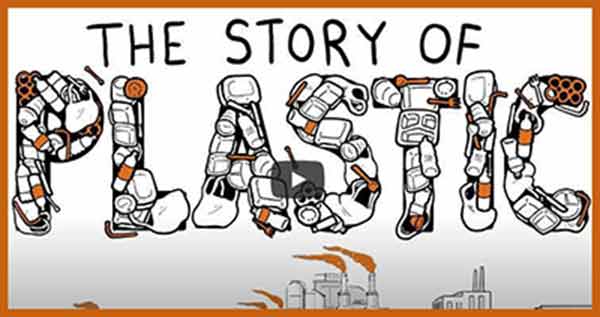Plastic: A Toxic Love Story

There are pros and cons to plastic, which is why Plastic: A Toxic Love Story is such a great title for a book by Susan Freinkel. After watching an interview with her, and thoroughly reading the recent issue of YES! magazine, “Solving Plastic,” I come away with these main thoughts.
The benefits of plastic:
Plastic has been a boon to many, making some products that were previously available only to the rich, such as tortoise shell or mother of pearl combs, accessible to those of modest or minimal wealth.
Plastic gives us things we need, want and love. Plastic is incredibly convenient. We have only to notice how many things we use everyday that are plastic, or put on a CD, to get that.
Plastic has revolutionized medicine, and generally been the “transformational material of modern times.”
The costs of plastic are as dramatic as the benefits:
People are paying for plastic with their lives as pollution from industrial plastic plants poisons marginalized communities where plastic is produced. (Companies don’t put their plants in Southampton or Beverly Hills, but in places like St. James Parish in New Orleans, home to low income people of color.)
By 2050 it is estimated there will be more plastic in the ocean than fish. We see horrific images of huge amounts of plastic waste in rivers, oceans and on beaches all over the world.
Dangerous toxic chemical additives in plastic used in food packaging end up in our bodies.
CONCLUSION
Durable, reusable, long-lasting plastic is a useful product.
There are always tradeoffs. For example, we might select a glass jar of mayonnaise because we know it can be recycled, but because it is heavier than plastic transportation costs will be higher, hence more emissions.
It is plastic pollution that is the focus of the Break Free From Plastic movement. We must demand that producers take responsibility for all the costs of their products. They need to cease producing, packaging and marketing tiny amounts of snack foods, etc. in cute little wrappers that are tossed.
Governments on local, state and national levels, must set policies that, for starters, ban single-use plastic, improve recycling infrastructure, and require “extended producer responsibility.”
People and planet must be the priority over profits!
RESOURCES
YES! magazine, "Solving Plastic"
"The Story of Plastic"
Break Free From Plastic
Back to Blog